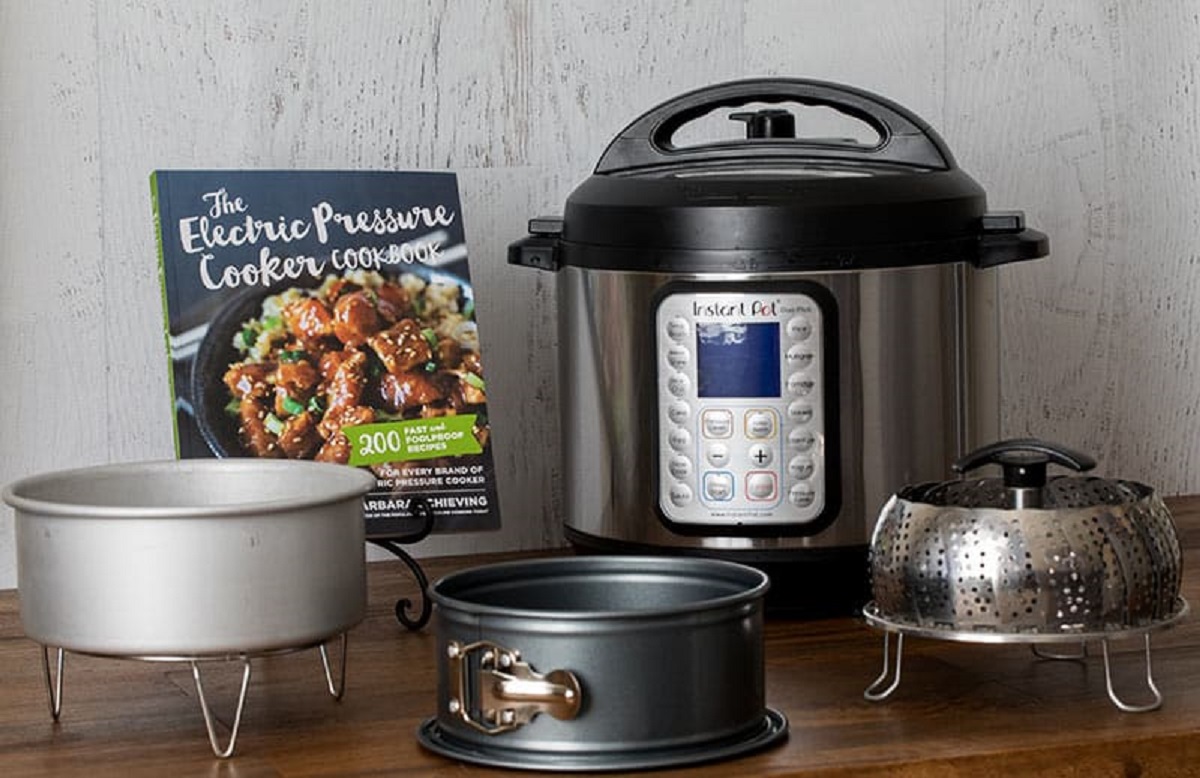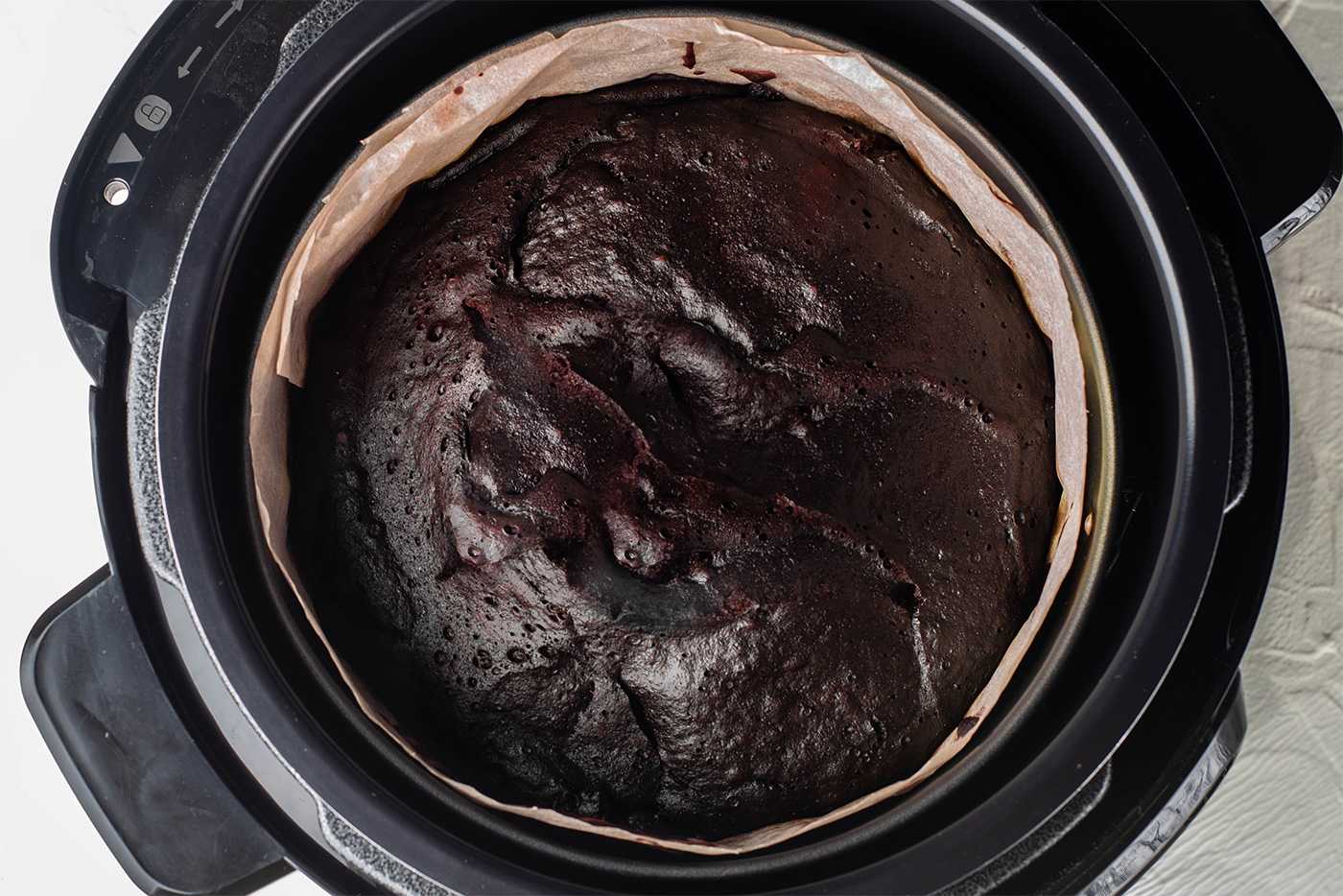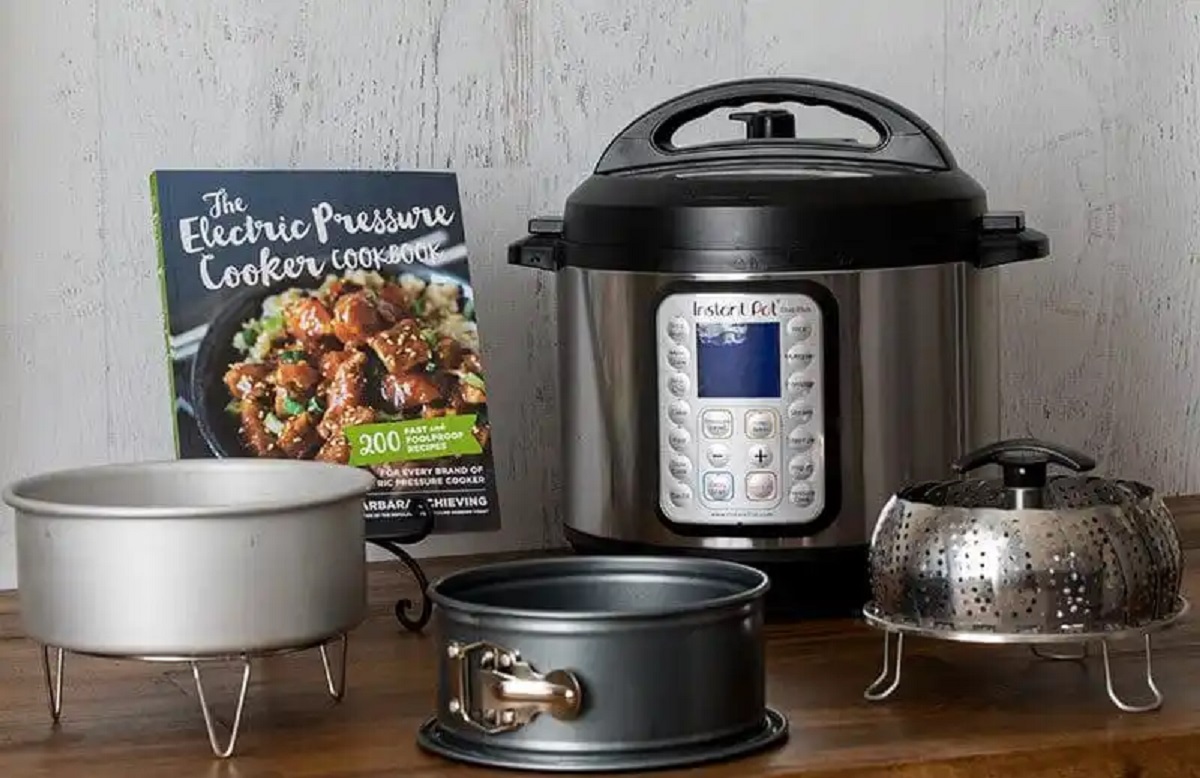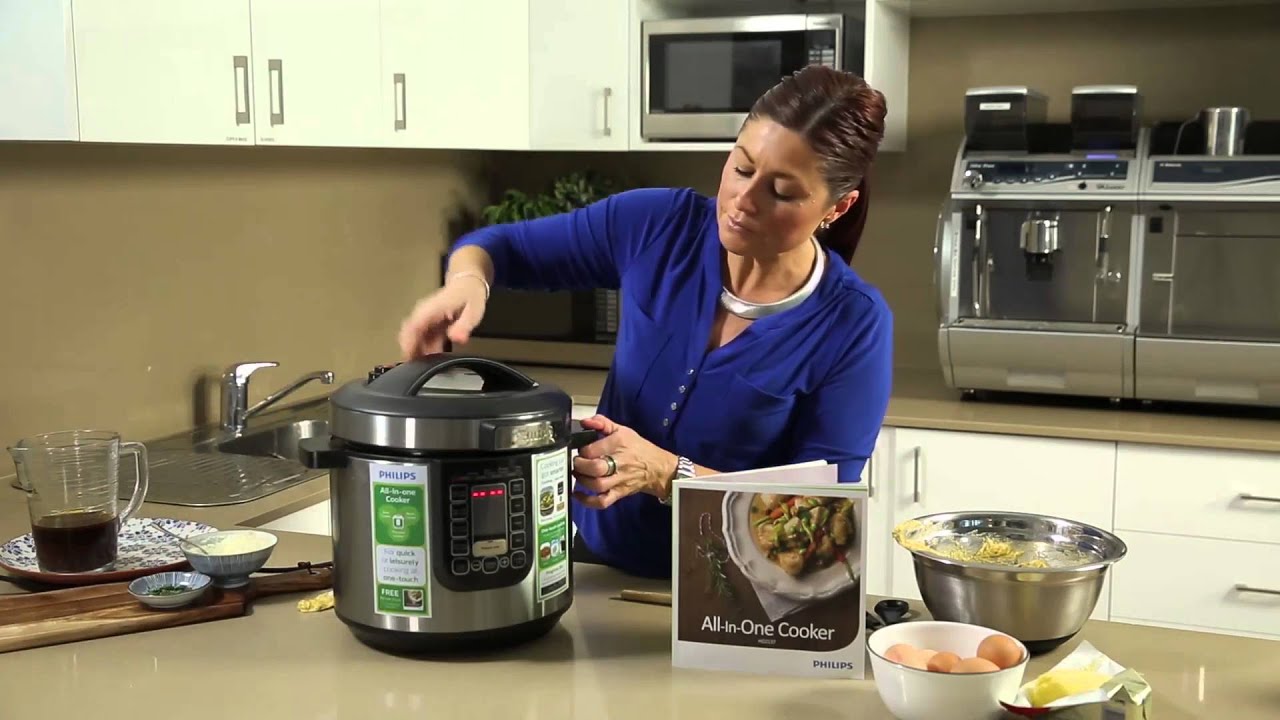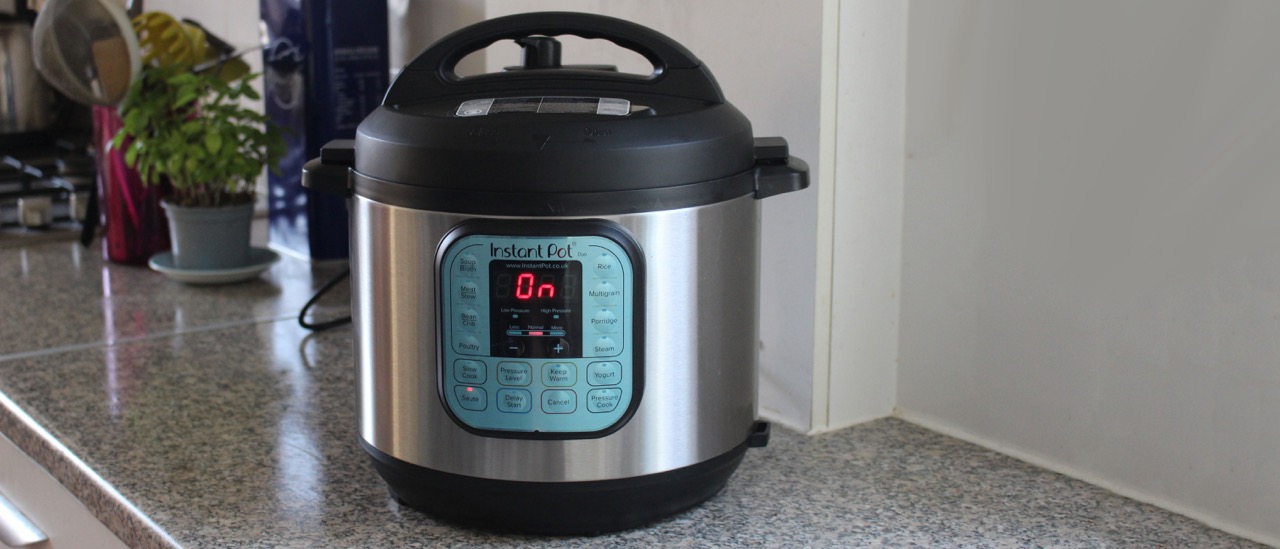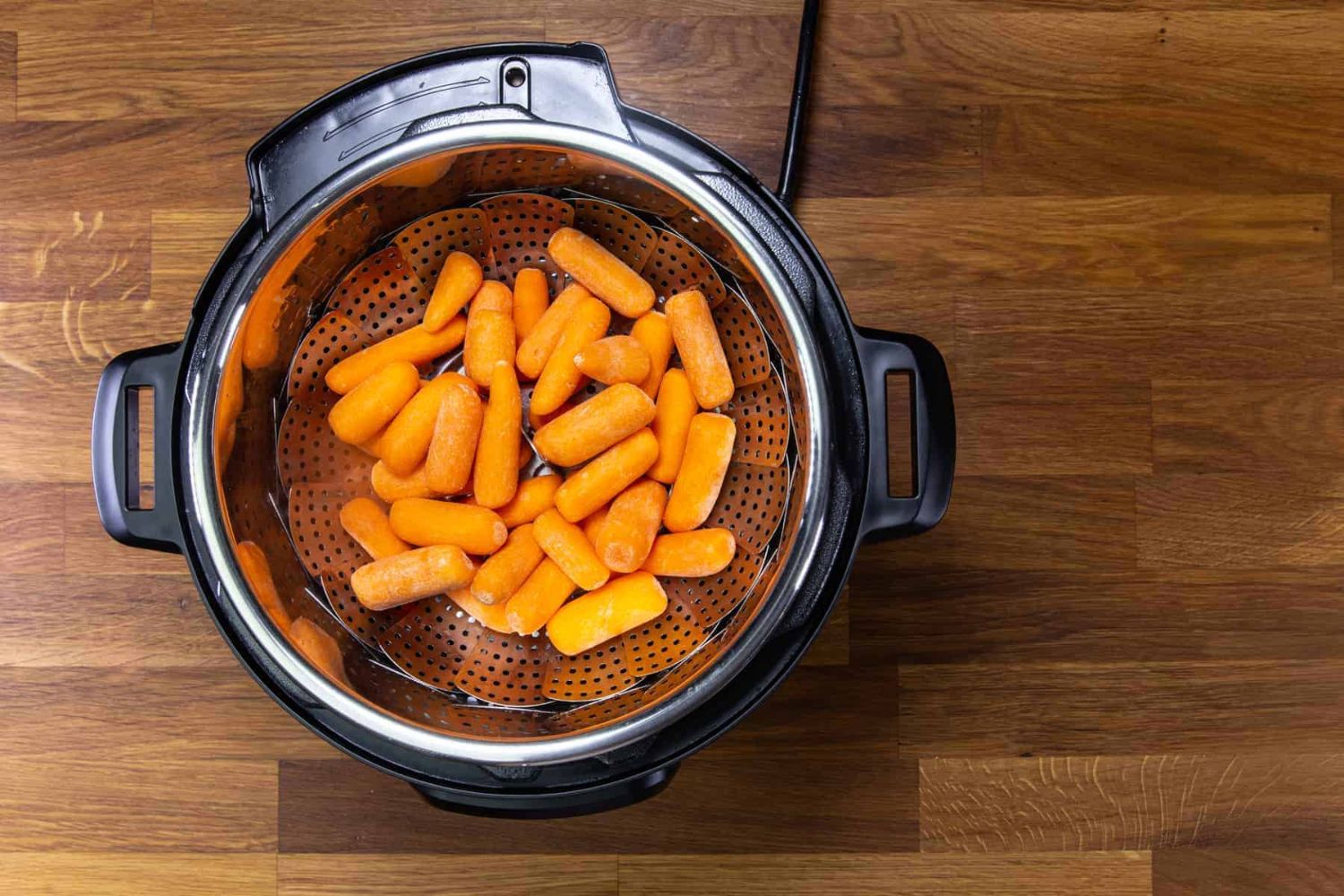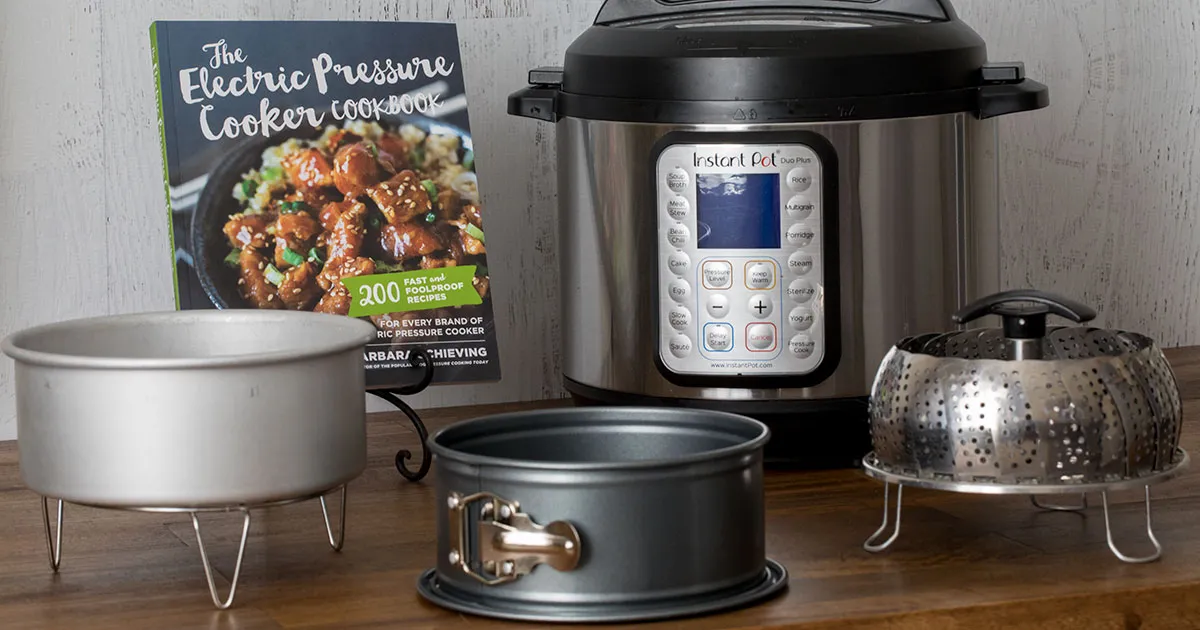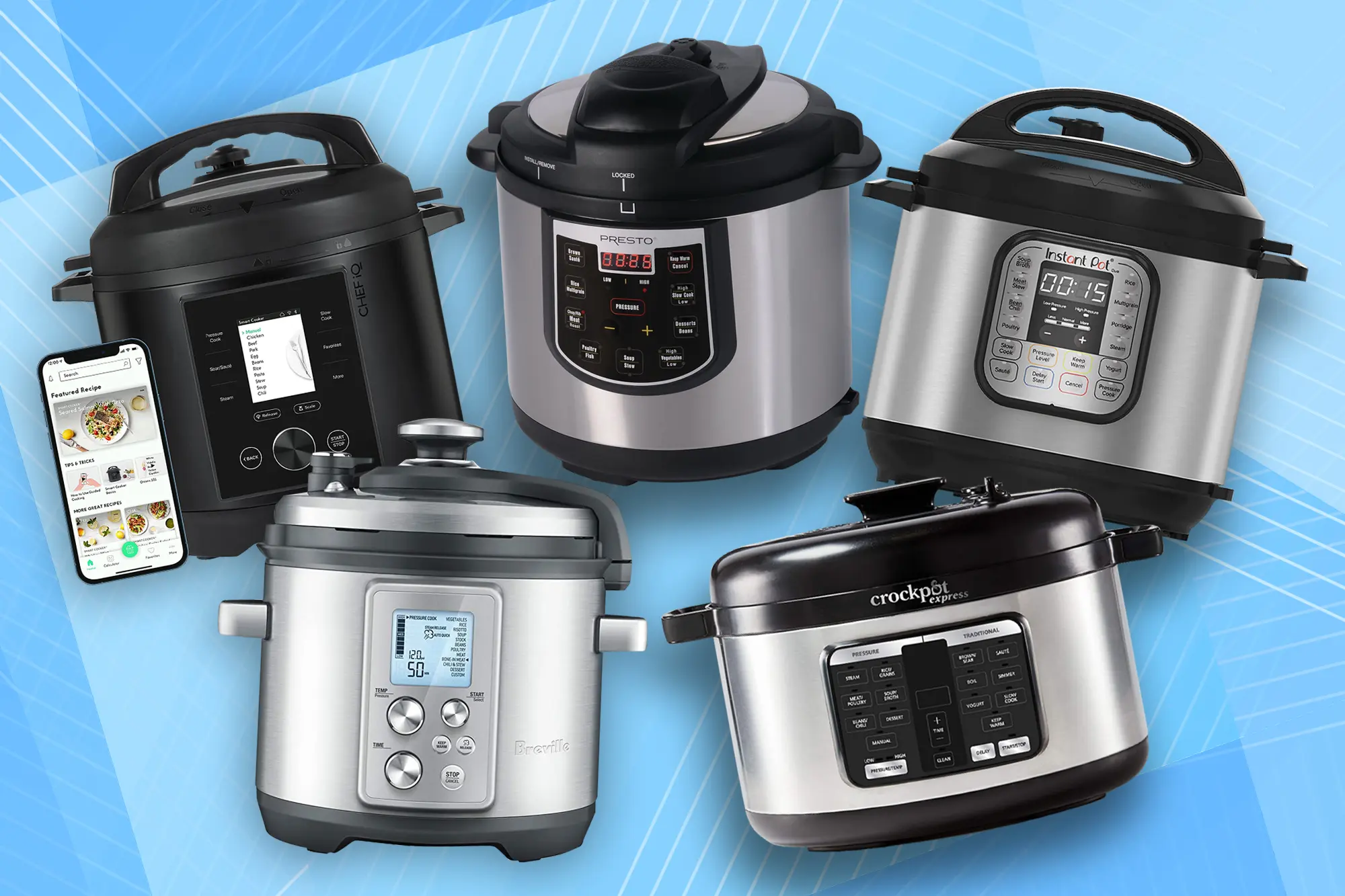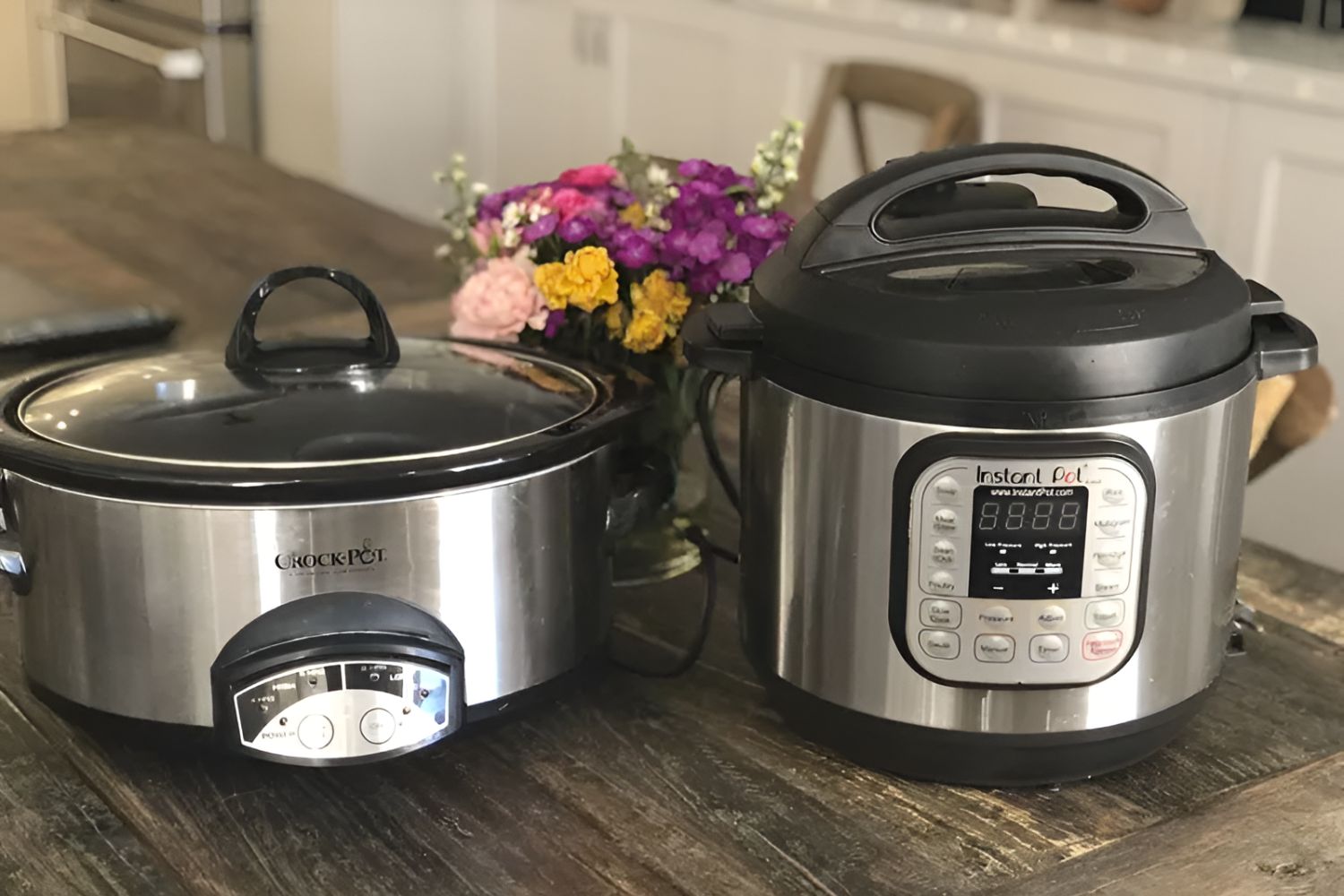Introduction
Welcome to the world of electric pressure cookers, where the possibilities of cooking and baking are endless. These multifunctional appliances have revolutionized the way we prepare meals, offering convenience, time savings, and versatile cooking options. While pressure cookers are primarily known for their ability to quickly cook savory dishes, they also offer a remarkable alternative for baking.
If you’re an avid baker or simply enjoy the occasional treat, using an electric pressure cooker for baking can be a game-changer. From moist and fluffy cakes to delectable cheesecakes, pressure cookers provide a unique method for achieving delicious results in a fraction of the time traditionally required.
Whether you’re a beginner in the kitchen or a seasoned pro, understanding the different cake pan sizes suitable for electric pressure cookers is crucial. Using the wrong size can lead to undercooked centers, uneven baking, or even overflowing batter. In this article, we’ll explore the benefits of using an electric pressure cooker for baking and guide you through choosing the perfect cake pan size to ensure a successful baking experience every time.
So, if you’re ready to take your baking skills to new heights and make the most of your electric pressure cooker, let’s delve into the world of cake pan sizes and discover the secrets to perfectly baked treats!
Benefits of Using an Electric Pressure Cooker for Baking
When it comes to baking, an electric pressure cooker can offer numerous advantages that make it a worthwhile investment for any baking enthusiast. Let’s explore some of the key benefits:
- Time Efficiency: One of the greatest benefits of utilizing an electric pressure cooker for baking is the significant reduction in baking time. The intense heat and pressure within the cooker accelerate the cooking process, allowing cakes to bake in a fraction of the time compared to conventional ovens. This can be especially advantageous when you’re pressed for time or simply can’t wait to dig into a delicious homemade cake.
- Moisture Retention: Electric pressure cookers create a sealed environment that helps retain moisture during the baking process. This results in incredibly moist and tender cakes, which can be especially beneficial for delicate and sponge-like cake textures. Say goodbye to dry and crumbly cakes – with an electric pressure cooker, your baked goods will come out perfectly moist every time.
- Even Heat Distribution: Unlike traditional ovens that often have hot spots, electric pressure cookers distribute heat evenly throughout the cooking chamber. This ensures that your cakes bake uniformly, eliminating the risk of undercooked or overcooked sections. You can say goodbye to disappointments caused by uneven baking – an electric pressure cooker guarantees consistently delicious results.
- Space-saving Solution: If you have limited kitchen space or simply prefer to declutter your countertops, an electric pressure cooker can be a great space-saving solution. With its multipurpose functionality, you can use it for both savory cooking and baking, eliminating the need for a separate oven. Enjoy the convenience of having one appliance that can do it all without sacrificing precious kitchen real estate.
Now that we’ve explored the numerous benefits of using an electric pressure cooker for baking, it’s time to dive into the world of cake pan sizes and find the perfect fit for your culinary creations.
Understanding the Different Cake Pan Sizes
When it comes to baking, understanding the various cake pan sizes is essential for achieving well-baked and perfectly proportioned treats. Cake pans come in a range of dimensions, each designed to create a specific cake size and shape. Let’s take a closer look at some of the most common cake pan sizes:
- Round Cake Pans: Round cake pans are the most commonly used pans for baking cakes. They come in various sizes, typically ranging from 6 inches to 12 inches in diameter. The size you choose will determine the height and width of your cake. Smaller round cake pans are ideal for single-layer cakes or smaller gatherings, while larger ones can accommodate multi-layer cakes and larger groups.
- Square Cake Pans: Square cake pans are similar to round pans but have straight sides. They are often used for creating brownies, bar cookies, or square-shaped cakes. Square pans usually come in sizes ranging from 8 inches to 12 inches, with the size determining the overall dimensions of your baked goods.
- Rectangular Cake Pans: Rectangular cake pans are commonly used for baking sheet cakes, lasagnas, or casseroles. They offer a large surface area and come in sizes like 9×13 inches or 11×15 inches. These pans are perfect for baking desserts or savory dishes that need to be sliced into rectangular portions.
- Bundt Cake Pans: Bundt cake pans have a distinctive ring shape with decorative ridges. These pans are specifically designed for creating stunning bundt cakes with their signature hole in the center. Bundt cake pans are generally 9 to 10 inches in diameter and are perfect for creating visually appealing and delicious desserts.
- Springform Cake Pans: Springform pans consist of two pieces – a removable side and a base that securely locks together. This design allows for easy removal of delicate and crumbly cakes without damaging their shape. Springform pans can be found in various sizes, typically ranging from 8 inches to 10 inches in diameter.
Understanding the different cake pan sizes and their respective dimensions is crucial when it comes to choosing the right pan for your electric pressure cooker. In the next section, we’ll explore the ideal cake pan sizes that work best with these appliances, ensuring delicious results every time you bake.
Ideal Cake Pan Sizes for Electric Pressure Cookers
Choosing the right cake pan size is crucial to ensure that your cakes bake evenly and fit perfectly within the confines of an electric pressure cooker. While electric pressure cookers come in various sizes, the available space for baking may vary. Here are some ideal cake pan sizes that work well with electric pressure cookers:
- 6-inch Round Cake Pan: A 6-inch round cake pan is perfect for creating small, single-layer cakes or personal-sized treats. It fits comfortably in most electric pressure cookers, making it an ideal choice for smaller gatherings or when you want to whip up a small dessert for yourself.
- 7-inch Round Cake Pan: Slightly larger than the 6-inch pan, a 7-inch round cake pan offers a bit more room for baking. This size is versatile and can be used for single-layer cakes or layered cakes when you want a taller final result. It’s a popular size for electric pressure cooker baking due to its compatibility with most models.
- 9-inch Round Cake Pan: The 9-inch round cake pan is a classic choice for baking layer cakes. It provides ample space for multiple cake layers and is a common size for traditional oven baking. It can also fit well in larger electric pressure cookers, allowing you to create impressive multi-tiered cakes with ease.
- 8-inch or 9-inch Square Cake Pan: Square cake pans can be a great option for electric pressure cooker baking as they maximize the available space. Both 8-inch and 9-inch square pans work well, providing a wider surface area compared to round pans. They are suitable for a variety of recipes, including bar cookies, brownies, and square-shaped cakes.
- 10-cup Bundt Cake Pan: For those who enjoy making beautiful and intricate bundt cakes, a 10-cup bundt cake pan is an excellent choice. Ensure that the pan is designed to fit in your specific electric pressure cooker model. The round shape with a center hole distributes heat evenly, resulting in a perfectly baked cake that can be a stunning centerpiece for any occasion.
Keep in mind that exact pan sizes can vary depending on the manufacturers, so it’s always recommended to measure the dimensions of your electric pressure cooker’s baking area to ensure a proper fit for the chosen cake pan size. Now that you have an idea of the ideal cake pan sizes, let’s move on to some helpful tips for choosing the right cake pan size for your baking needs.
Tips for Choosing the Right Cake Pan Size
Choosing the right cake pan size is essential for baking success. Here are some helpful tips to keep in mind when selecting a cake pan size for your electric pressure cooker:
- Measure the Internal Cooking Area: To ensure a proper fit, measure the internal cooking area of your electric pressure cooker using a tape measure. This will give you a clear idea of the maximum dimensions for your cake pan.
- Consider the Recipe: Take into account the recipe you plan to use. Some recipes specify the recommended pan size, which can help you determine the appropriate dimensions. If the recipe doesn’t provide a specific size, consider the volume of the batter to determine an appropriate pan size.
- Allow for Expansion: When choosing a cake pan size, keep in mind that the batter will rise during baking. Leave enough room for the cake to expand without overflowing or touching the sides of the pressure cooker. Aim for an inch or two of clearance between the batter and the top of the pan to accommodate any rising or expansion.
- Consider the Desired Height: If you prefer taller cakes, opt for a smaller diameter and taller cake pan. This will allow you to achieve the desired height while ensuring that the cake cooks evenly. For more standard-sized cakes, choose a wider pan that promotes even baking and provides enough surface area for layers or decorations.
- Invest in Adjustable Cake Pans: Adjustable cake pans are a versatile option for electric pressure cooker baking. These pans allow you to customize the size based on your specific needs, making them a great investment if you frequently bake different-sized cakes. Look for adjustable pans made of high-quality materials that can withstand the pressure cooker environment.
- Consider the Shape: Aside from size, consider the shape of the cake pan that best suits your desired dessert. Round, square, rectangular, or bundt pans are all suitable for electric pressure cooker baking, so choose the shape that complements your recipe or personal preference.
Remember, choosing the right cake pan size is crucial for ensuring that your cakes bake evenly and turn out perfectly. Consider the tips above, measure your electric pressure cooker’s cooking area, and select a pan size that will allow for proper expansion and the desired height. With the right cake pan, you’ll be on your way to creating delectable baked goodies with your electric pressure cooker.
Common Mistakes to Avoid
While baking with an electric pressure cooker can be a rewarding experience, it’s important to be aware of some common mistakes that can affect the outcome of your creations. By avoiding these pitfalls, you can ensure that your cakes turn out perfectly each time. Here are some of the most common mistakes to avoid:
- Using the Wrong Pan Size: Using a cake pan that is either too large or too small for your electric pressure cooker can result in uneven baking or overflow of the batter. Always refer to the recommended pan sizes and measure your pressure cooker’s cooking area to select the appropriate pan size.
- Not Adjusting Baking Time: Baking in an electric pressure cooker may require adjustments to the recommended baking time in traditional oven recipes. This is because pressure cookers bake at a higher heat and pressure, which can speed up the cooking process. Monitor your cake closely, and adjust the baking time accordingly to avoid undercooked or overcooked results.
- Neglecting to Grease the Pan: Forgetting to properly grease your cake pan can lead to the cake sticking to the sides, making it difficult to remove. Ensure that you generously grease the pan with butter or cooking spray before adding the batter to prevent any sticking issues.
- Overfilling the Pan: It’s crucial not to overfill your cake pan, as the batter needs enough room to rise and expand during the baking process. If you fill the pan too close to the top, the batter may overflow or touch the sides of the pressure cooker, resulting in an unevenly cooked cake and a potential mess inside the cooker.
- Not Allowing the Cake to Cool: Once the cake is done, resist the temptation to immediately remove it from the pressure cooker. Cakes need time to cool and set before being removed from the pan. Allow the cake to rest in the pressure cooker with the lid off for at least 10-15 minutes, or until it is cool enough to handle. This will help prevent the cake from breaking apart when removing it from the pan.
- Relying Solely on the Pressure Cooker’s Built-in Timer: While many electric pressure cookers come with a built-in timer, it’s important to use an additional timer as a backup. This will help you keep track of the baking time accurately and prevent any potential mishaps resulting from relying solely on the pressure cooker’s timer.
By being aware of these common mistakes and taking measures to avoid them, you can ensure a smooth and successful baking experience with your electric pressure cooker. Now that we’ve covered the mistakes to steer clear of, let’s wrap up with a recap of the valuable insights we’ve discussed throughout this article.
Conclusion
Baking with an electric pressure cooker opens up a world of possibilities, allowing you to create delicious cakes and treats with ease and efficiency. By understanding the benefits of using an electric pressure cooker for baking and choosing the right cake pan sizes, you can achieve exceptional results in a fraction of the time.
Remember to consider the dimensions of your electric pressure cooker’s cooking area and select the appropriate cake pan size. Take into account factors such as the desired height of your cake, the recipe requirements, and the need for proper batter expansion. Grease your pan properly, monitor the baking time closely, and allow the cake to cool before removing it from the pan.
Avoid common mistakes such as using the wrong pan size, neglecting to grease the pan, overfilling the pan, and relying solely on the pressure cooker’s built-in timer. By being mindful of these potential pitfalls, you can ensure that your baking experience with an electric pressure cooker is a success.
So, go ahead and step into the world of electric pressure cooker baking with confidence. Experiment with different recipes, unleash your creativity, and enjoy the convenience and delicious outcomes that this versatile appliance can bring to your baking adventures.
Happy baking!







